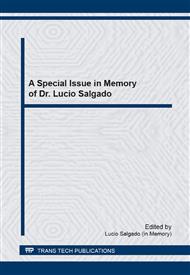p.343
p.350
p.356
p.362
p.368
p.374
p.380
p.386
p.395
Determination of Surface Roughness in Turning of Aluminum Bronze Alloy (UNS С 63020) Using Cutting Tools with Carbide Geometry Positive and Negative
Abstract:
In today's industry, production processes evolve every day, together with the development of new materials and geometries for tools and machines more accurate and efficient. These new technologies allow more flexible processes, such as replacement of the grinding process by turning of hardened materials. This change brings significant reductions in costs of tooling, setup time and machining.This work is a study of the conditions for turning aerospace alloy - Bronze Aluminum (UNS 63020)-hardened and tempered with a hardness of 35 HRC with carbide tools with positive and negative geometry.We analyzed the surface roughness of the specimen and as a criterion for end of life of the cutting tool was used to flank wear, crater wear, chip on the tool and/or the breach thereof.All the cutting parameters, when in their highest levels, do not contribute significantly to the reduction in tool life, while the surface roughness for the increase in the feed (f) and the cutting speed (vc) showed a greater influence on surface finish of the piece.
Info:
Periodical:
Pages:
368-373
Citation:
Online since:
September 2014
Keywords:
Price:
Сopyright:
© 2015 Trans Tech Publications Ltd. All Rights Reserved
Share:
Citation:


